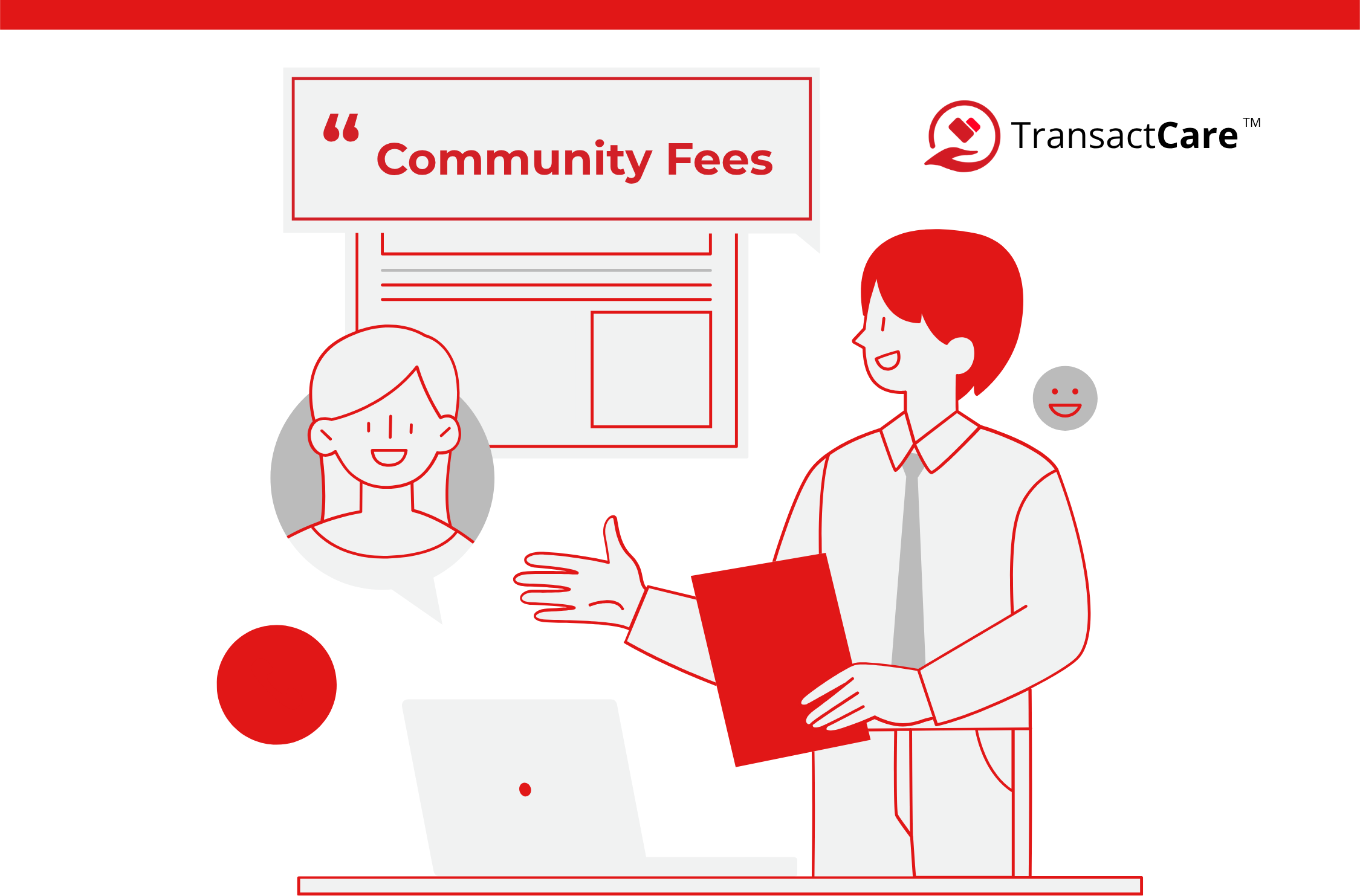The $402,000 Question
Not all move-in fees are created equal. In some Continuing Care Retirement Communities (CCRCs), the average entrance fee now reaches $402,000.¹ But even outside the high-end world of CCRCs, upfront costs are everywhere in senior living. In assisted living and memory care communities, they typically show up as security deposits or community fees.
These deposits might not reach CCRC-level shock value, but they raise plenty of questions: Are they refundable? Who keeps the money if a resident moves out early or passes away? How do you explain a deduction without triggering a dispute?
This post is for both sides of the equation: families trying to understand where their money’s going, and facilities trying to manage those conversations without risking trust, complaints, or compliance violations. We’ll break down how senior care deposits actually work, how they should be handled, and where things tend to go wrong.
For Residents and Families
Thinking about moving into a senior living facility? Here’s what to know about deposits before you sign anything.
- What Is a Senior Living Security Deposit, Really?
- Are Deposits Standard Across All Types of Senior Living?
- What Does the Security Deposit Actually Cover?
- What Happens If We Need to Move Out Early?
- What Happens to the Deposit If a Loved One Passes Away?
- Can Families Pay the Deposit in Installments?
- Will a Deposit Affect Medicaid Later On?
- Can Families Dispute Deposit Deductions Upon Return?
- How Long Does It Take to Get a Security Deposit Back?
For Facility Operators
Managing resident deposits in your community? Here’s how to stop making it a headache for everyone involved.
- Is It Legal to Charge These Deposits?
- Can Residents Pay Deposits in Installments?
- Can Residents or Families Dispute Deposit Deductions?
- Are Deposits Handled Through Secure Payment Solutions?
- Should Facilities Ditch Deposits?
- Are There Rules Around How Fast Deposits Must Be Returned?
- What Legal Protections Do Residents Have?
- How Do Refundable vs. Non-Refundable Fees Affect Retention?
- Why Deposits Should Sync With Your Payment Platform
- Closing Reminder: Deposits Are a Process, Not Just a Line Item
What Is a Senior Living Security Deposit, Really?
Let’s start here: no, not every facility calls it a “security deposit.” And no, they’re not all refundable. Most communities use some combination of the following:
- Security Deposit: This one’s refundable (in theory). It’s held in escrow and may be used to cover damages, unpaid rent, or early termination fees.
- Community Fee: A one-time, non-refundable fee, usually $2,000 – $5,000. Think of it as the cover charge for moving in. It covers administrative costs, turnover preparation, and sometimes minor renovations.
- Entrance Fee: Popular in Continuing Care Retirement Communities (CCRCs), this can range from $100,000 to over $1 million, depending on the contract type. Sometimes refundable, sometimes not, depending on how long the resident stays and how the contract is structured.
Bottom line? Always ask what kind of deposit you’re dealing with and get it in writing.
Are Deposits Standard Across All Types of Senior Living?
Unfortunately not. The security deposit rules at an assisted living community will look wildly different than those at a memory care facility or a Continuing Care Retirement Community (CCRC).
- Independent living facilities often require a modest community fee and maybe a refundable deposit, but they usually don’t involve the higher six-figure entrance fees you’ll find in CCRCs.
- Assisted living tends to follow more traditional landlord-style deposit models, with refundable deposits held for damage or missed payments.
- Memory care might require higher deposits due to the specialized nature of the unit and the increased risk of wear, tear, and liability.
- CCRCs are in a league of their own, often combining housing, healthcare, and long-term services under one roof. These communities typically operate under a different financial model, with entrance fees that can average hundreds of thousands of dollars. Their contracts are detailed by design, sometimes 40 pages or more, and often include structured refund provisions based on factors like length of stay or actuarial calculations.
So before you assume that “$5,000 deposit” means the same thing everywhere, it doesn’t. Ask. Compare. Get documentation. Because one community’s “refundable” is another’s “non-refundable administrative holding fee.” (Yes, that’s a thing.)
What Does the Security Deposit Actually Cover?
This is the question most families don’t ask, because they’re too busy coordinating movers and figuring out which box has the hearing aids in it. But it’s crucial.
A security deposit is held in trust and is meant to:
- Cover unpaid invoices
- Pay for any damages beyond normal wear and tear
- Act as a financial cushion if a resident bounces mid-lease
Most facilities don’t break this down clearly. That’s where better healthcare payment software and resident portals make a huge difference, especially if they log fee breakdowns and real-time deductions for residents and families to review.
What Happens If We Need to Move Out Early?
Sometimes plans change. A care need increases, finances shift, or the community just isn’t the right fit, and you need to end the stay earlier than expected. Naturally, one of the first questions is: Can we get the deposit back?
That depends on the type of fee you paid:
- If you paid a security deposit, you might get a portion (or all) of it refunded. But the community may deduct for things like apartment damage, unpaid rent, or early move-out costs, especially if there was a lease or residency agreement in place.
- If you paid a community fee, it’s usually non-refundable. That amount typically covers the cost of preparing the apartment before move-in, like painting, deep cleaning, and general maintenance.
- If you’re in a CCRC (Continuing Care Retirement Community), and paid a larger entrance fee, some portion may be refundable, depending on how long the resident stayed and what the contract says.
The best thing you can do is ask the community up front to explain how their refund policy works if someone moves out early, and get it in writing. Having that clarity now can make an unexpected transition a little easier later.
What Happens to the Deposit If a Loved One Passes Away?
Most agreements outline procedures for refunding security or entrance fees in the event of death, but timelines vary. Some policies require the unit to be reoccupied before refunds are issued. Others involve lengthy probate coordination. And don’t be surprised if administrative fees are deducted.
Pro tip for families:
- Request a written copy of the refund policy tied to resident death or emergency discharge.
- Confirm who is legally authorized to receive the funds.
- Ask for a clear timeline (30–90 days is common, but not guaranteed).
Can Families Pay the Deposit in Installments?
In some communities, yes. While many senior living facilities require the full deposit up front, others now offer more flexible options, like spreading the payment over a few months or bundling it into your monthly rent during the first part of the stay.
This can make a big difference for families trying to manage the upfront costs of a transition. If splitting the deposit would help your situation, it’s absolutely worth asking about.
Just be sure to get the terms in writing:
- How much is due each month?
- Is there a deadline for paying the full amount?
- Will late payments affect your resident account?
Not every facility offers this, but many are open to discussing it, especially if it helps make the move smoother for everyone involved.
Will a Deposit Affect Medicaid Later On?
If your loved one is paying out of pocket now but may need Medicaid in the future, it’s important to ask how any deposit or move-in fee might affect eligibility down the road.
Medicaid usually won’t reimburse families for:
- Non-refundable community or administrative fees
- Large deposits that aren’t used specifically for care
- Charges not directly tied to room, meals, or medical services
In some cases, even refundable entrance fees can count as assets, meaning they could delay or complicate Medicaid approval until that amount is used up or “spent down.”
Before signing anything, ask the facility how they handle deposits for residents who later transition to Medicaid. A good community will be able to walk you through how their fees are categorized, and how they’ve handled this in the past. If they can’t give a clear answer, it’s worth slowing down and getting more information.
Can Families Dispute Deposit Deductions Upon Return?
Yes, if something doesn’t feel right. Most communities provide an itemized list of any deductions made from a security deposit upon return, such as damage repairs or unpaid charges. But if that breakdown seems vague, excessive, or just plain inaccurate, you’re allowed to ask questions.
Start by requesting a detailed statement in writing, and ask for supporting documentation: photos, maintenance reports, or billing records. Reputable communities will usually have no problem providing this.
If the issue isn’t resolved, you can escalate by:
- Contacting the community’s business office or administrator
- Reaching out to your state’s ombudsman for long-term care
- Filing a formal complaint through your state’s department of aging or licensing agency
In most cases, clear communication is enough to settle the matter. But it’s important to know that you do have options if you believe the deduction wasn’t fair or properly documented.
How Long Does It Take to Get a Security Deposit Back?
Once your loved one moves out, the facility should return any refundable deposit within a set period, usually 30 to 60 days. That timeline can vary depending on your state, the community’s policies, and whether there are any outstanding charges to be settled first.
To avoid surprises, ask ahead of time:
- When can we expect the refund?
- Will it be sent by check or direct deposit?
- What kinds of things might delay it, like damage charges or final invoices?
It’s also a good idea to confirm who the refund will be issued to especially if a family member handled payments or if the resident has passed away. Getting clear answers upfront can make this part of the transition a lot smoother.
If you’re still waiting after the stated timeline, don’t hesitate to follow up. Most facilities want to resolve these quickly, especially if there’s a clear paper trail.
Is It Legal to Charge These Deposits?
Facilities are typically private businesses and can set their own financial policies, provided they’re disclosed upfront and don’t violate state landlord-tenant laws (which, yes, can still apply in certain assisted living situations). Deposits must generally be:
- Clearly outlined in the residency agreement
- Tracked separately from operating funds
- Returned within a defined timeline, if refundable
Can Residents Pay Deposits in Installments?
Some facilities now allow deposits to be split into monthly payments or even rolled into the rent for the first few months, especially when trying to make move-ins more accessible or compete in a saturated local market.
Benefits:
- Easier for families to afford the move
- Helps facilities convert more leads
Drawbacks:
- Risk of families moving out before the full deposit is collected
- Accounting complexity if not using automated payment solutions
The key here is structure. If you’re offering split deposits, use a healthcare payment platform that logs and enforces those payments automatically. Don’t rely on your business office manager to remember who still owes $500 in community fees, because they probably won’t.
Can Residents or Families Dispute Deposit Deductions?
Yes, and they often do.
Most disputes arise from:
- Alleged unit damage (whose cat scratched the door?)
- Accrued unpaid charges (meals, care services, utilities)
- Unclear language in the original contract
This is where digital documentation and modern healthcare payment platforms shine. Facilities that use automated payment processing systems have detailed ledgers, timestamped payment records, and scanned invoices, all of which make disputes easier to resolve.
Pro tip for facilities: email a PDF breakdown of final charges with photo documentation and a secure refund receipt link. You’ll avoid the angry voicemails.
Are Deposits Handled Through Secure Payment Solutions?
Let’s shift gears for a second. The bigger conversation here is how facilities are collecting and managing these deposits.
In 2025, it’s no longer acceptable to track $6,000 security deposits on a spreadsheet and hope for the best. A secure payment solution should:
- Offer PCI-compliant digital collection (bye, paper checks)
- Clearly distinguish between refundable and non-refundable funds
- Automate alerts when refund timelines are approaching
- Integrate with back-end accounting and healthcare payment systems like PointClickCareTM.
Senior living is finally catching up with enterprise payment processing, and that’s a good thing. Platforms like TransactCare help streamline payment automation, refund tracking, and compliance across the board.
Should Facilities Ditch Deposits?
Not necessarily, but rethink how they’re used.
Some newer facilities are moving toward monthly “community access fees” instead of lump-sum deposits. Others waive deposits entirely for short-term stays or as part of seasonal move-in promotions. As the industry evolves, expect more flexible models backed by real-time payment systems, digital invoicing, and automated reconciliation. And fewer angry calls about why Grandma’s refund is still in the mail.
Are There Rules Around How Fast Deposits Must Be Returned?
Some states mandate refunds within 14–30 days, but many don’t specify exact timelines at all. And even when a timeline exists, enforcement is usually weak unless the family hires an attorney or files a formal complaint.
Best practices for facilities:
- Refund security deposits within 30 days max
- Offer digital ACH/Credit Card refunds as an alternative to a mailed check
- Send an itemized statement explaining any deductions
- Use healthcare payment platforms to log refund processing timelines
Facilities that adopt enterprise payment systems and automate refund workflows look significantly more professional than those who rely on “Susan will get to it when she’s back from PTO.”
What Legal Protections Do Residents Have?
Depending on your state, residents may have rights under:
- Landlord-tenant laws (yes, even in assisted living).
- Consumer protection statutes.
- Elder abuse and financial exploitation laws.
- Medicaid or long-term care insurance contract requirements.
If a facility withholds a refund without explanation, families can often escalate through:
- The state’s long-term care ombudsman.
- The Department of Aging or Licensing and Regulatory Affairs.
- Civil court, if necessary (nobody wants this, but it happens).
For facilities, the takeaway is simple: cover your butt. Use secure payment systems that timestamp every transaction, generate ledger reports, and document every fee in your resident agreement. That audit trail? It’s your best friend when disputes get heated.
How Do Refundable vs. Non-Refundable Fees Affect Retention?
It’s counterintuitive, but non-refundable fees can actually increase resident retention. Why? Sunk cost psychology. Families who pay a $5,000 community fee up front are less likely to transfer Mom after 90 days just because another facility has better wallpaper.
However, refundable deposits increase trust, especially for short-term respite care, memory care transitions, or rehab-to-home move-ins.
If you want the best of both worlds:
- Offer a small community fee and a larger refundable deposit
- Let families “earn back” the deposit by staying 12+ months
- Use integrated payment processing software to track and communicate milestones
Retention is emotional, but billing strategy plays a bigger role than most facilities realize.
Why Deposits Should Sync With Your Payment Platform
Imagine this scenario: a resident moves in and pays a $3,500 deposit. Six months later, they move out. The family calls to ask about their refund, and your billing team says, “Hold on, let me pull up the paper ledger.”
It’s 2025. That’s not just embarrassing, it’s a liability.
Deposits should:
- Be recorded at the point of collection
- Be linked to the resident’s billing profile
- Be reconciled automatically at move-out
- Trigger automated refunds (with approval routing)
If you’re using enterprise payment solutions, this is standard. If you’re still tracking deposits in Excel? You’re asking for errors, missing money, and angry families. And those turn into legal reviews, not online reviews.
Closing Reminder: Deposits Are a Process, Not Just a Line Item
Typically, deposits are treated as a checkbox on the move-in checklist, but they’re far more consequential. They affect trust, cash flow, dispute risk, legal compliance, and family experience. And they reflect how seriously your facility takes modern healthcare payment standards.
Ask yourself:
- Do we have a deposit policy that’s clear and modern?
- Are we using secure, trackable digital payment systems?
- Could a family dispute be easily resolved with our current tools?










